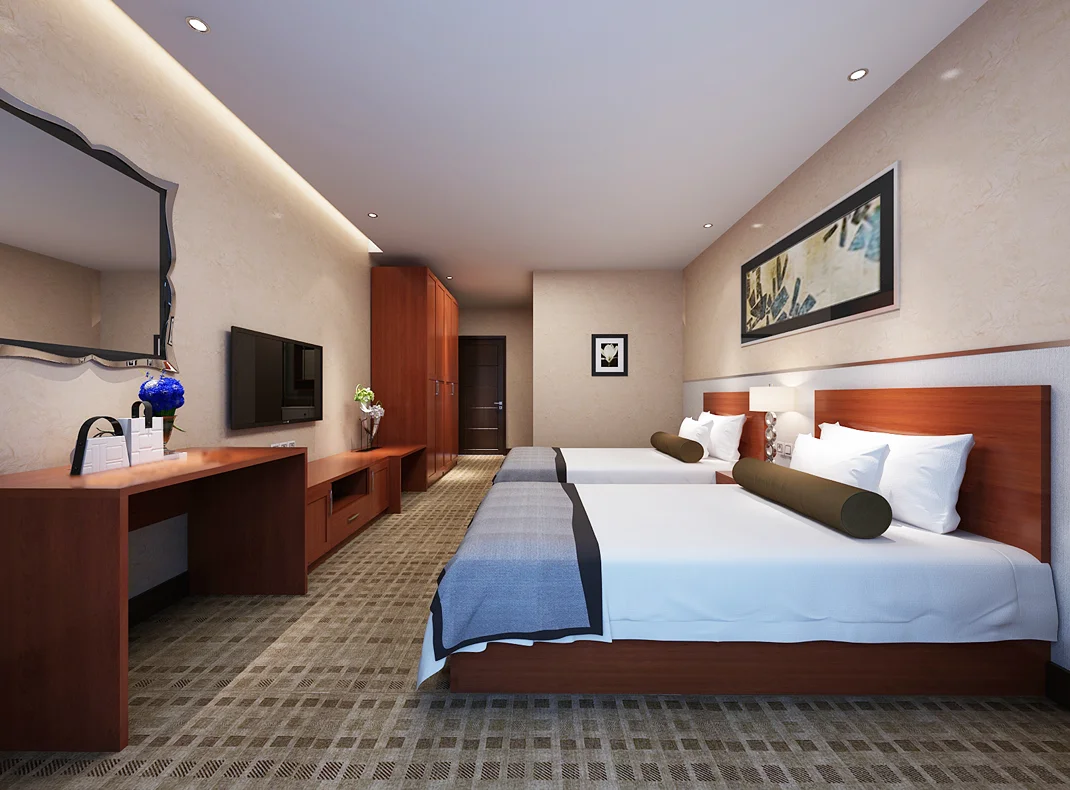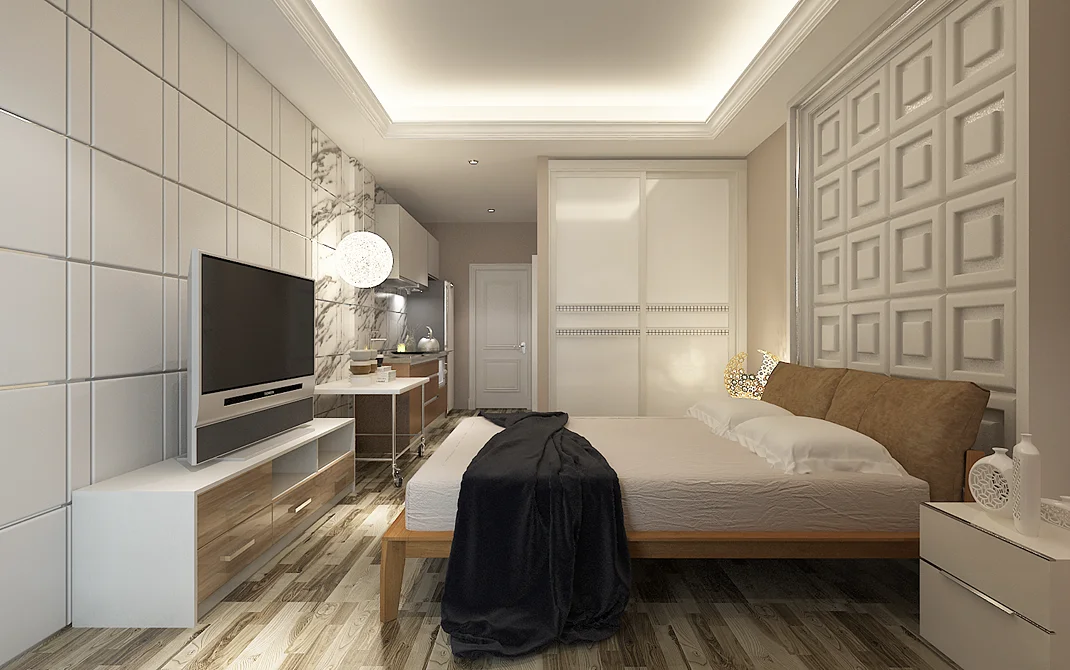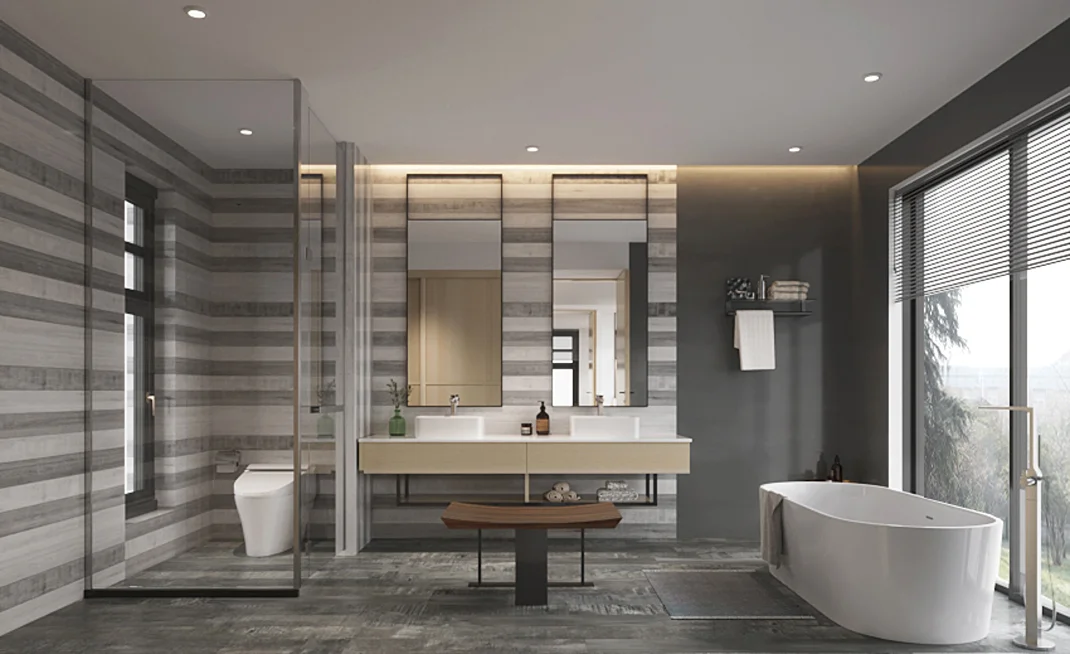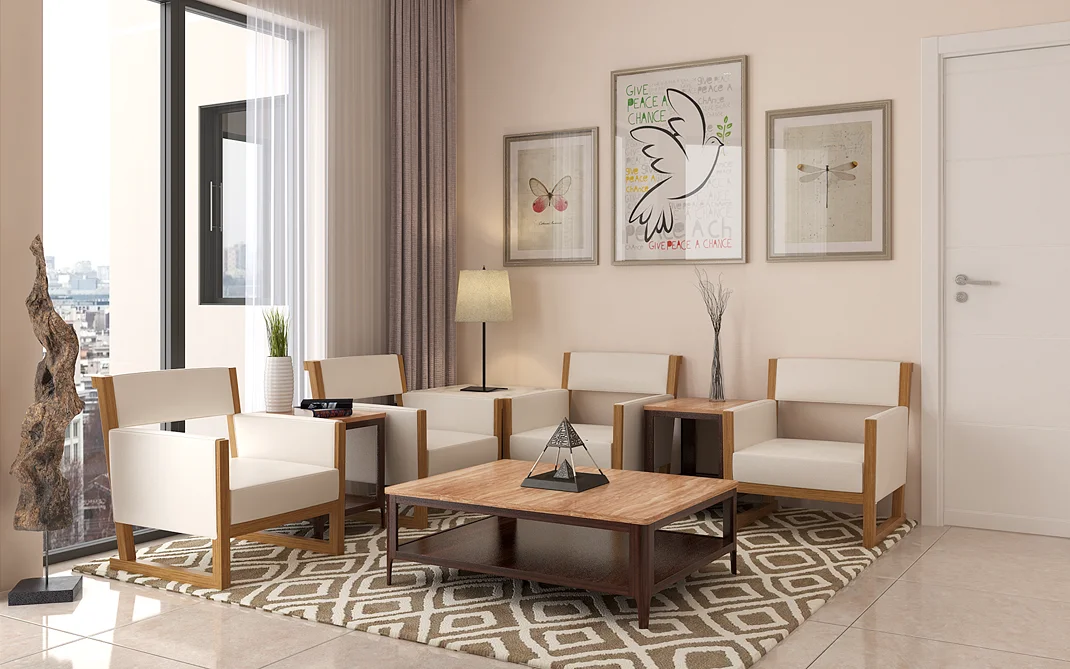Being associated with the hotel business, I have come to know that the major factor that contributes to the satisfaction of the guest when staying in a hotel is the aesthetic and comfort of their room. Every hotelier always struggles with the decision of furnishing a room because not only is it an expensive process but also because a wrongly chosen furnishing of a hotel can directly impact the reputation and profitability of the hotel. Therefore, this guide serves the purpose of exploring the nuanced world of furnishing a hotel room, focusing on the costs involved in it, the factors that increase these costs, and the strategies to minimize the cost of investment without compromising quality.
- Introduction to Hotel Room Furnishing
- Understanding the Costs of Furnishing a Hotel Room
- Factors that Influence the Cost of Furnishing a Hotel Room
- Breaking Down the Costs: Furniture, Essentials, and Decor
- The Role of Quality and Durability in Furnishing Costs
- Analyzing Costs: Furnishing a Luxury vs Budget Hotel Room
- Navigating the Costs of Furnishing with Brands
- Cost-Saving Strategies for Furnishing a Hotel Room
- The Impact of Furnishing on Hotel Guest Experience
- Conclusion
Introduction to Hotel Room Furnishing

Furnishing the room includes the carpet, which is installed on the floor before anything else. The softness of the carpet contributes to the room’s appearance and ambiance, as well as its practicality. Likewise can be said about the bed linens; fitted sheets also benefit the room’s functionality in different aspects. At the same time, the costs involved are a constant consideration. Hoteliers are conscious of the necessary expenses and also how to manage them.
It’s the first work that hoteliers need to complete when outfitting a hotel room. What kind of theme or style do you select for your brand identity and your chosen audience? What general aesthetic do you ascribe to? Everything you choose will then feed off of every other decision that follows. If you choose vintage-hipster-modern, your selection of hotel furniture to linens in the specified color palettes and textures will be dictated by that. You also need to make sure that whatever you have chosen can stand the challenge of being durable for wear and tear but also a style that doesn’t get old quickly.
When furnishing a hotel room, it is important to be aware of the financial implications. It could influence the operational cost of that hotel for years to come, thus making the furnishing cost of the room directly linked to determining the level of satisfaction among guests staying in the hotel. Consequently, those investing in the furnishing phase of a hotel would need to have a broad understanding of what factors influence the different costs of furnishing that hotel.
Understanding the Costs of Furnishing a Hotel Room

Such cost may vary significantly depending on many other aspects, including the location of the hotel, the level of chosen materials, and the complexity of the design. In fact, the cost to furnish a hotel room consists of more than how much one purchases the furniture and decor. Delivery, installation, and sometimes even custom design are expenditures to pay for.
First and foremost, understanding furnishing costs comes from understanding the distinction between capital expenditure (also known as capital expenditures or CAPEX) and operational expenditure (also known as OPEX). CAPEX is the cost of purchase of any piece of hotel furniture and fixture and is typically recorded as an asset of the hotel for accounting purposes. It is an ongoing cost component that must be considered as an investment in order to generate future revenues from the occupancy of rooms and other hotel facilities. OPEX, in turn, is related to the maintenance and replacement costs of all hotel furniture and fixtures.
To understand true costs, hoteliers must create a budget. They need to look at lead-time for delivery and regular replacement of furnishings and figure out the ongoing costs and expenses of providing value to their guests. In some cases, hotel furniture bought custom from overseas – might need to be seen and agreed upon before being sent. Once the hotel furniture sets arrive, hoteliers carefully inspect them for damages to decide whether to accept or reject them. Some hoteliers send skilled shopkeepers to examine the goods for extra assurance. Weathered by thousands of guests, my hotel’s chairs and tables reflect five decades of investment. In travel literature, fiction, and films, hotels are often portrayed as always meant to be temporary places.
Factors that Influence the Cost of Furnishing a Hotel Room

There are a few reasons why furnishing a hotel room would cost more or less, depending upon the specific factors.
First of all, the size of a room is a significant factor, as a larger room will generally require a greater number of furnishings or bigger furnishings. On the other hand, a room that is smaller or without additional accommodations, such as a hotel suite, will require less furnishings.
If a larger room or suite is furnished, this often results in additional furnishings, like multiple seating areas or large beds and various other entertainment systems. Logically, furnishing these larger rooms would be more expensive than furnishing smaller ones.
Another important consideration is the style of furnishing chosen. Custom/luxury or boutique hotels are more likely to have bespoke hotel furniture sets that can double the final cost of the building, while budget hotels, on the other hand, may emphasize quality and functionality; that is, they choose furniture sets that have proven to have a long life.
Moreover, hotel location is also a factor in determining the overall cost of furnishing. Hotels in remote spots are more often charged an air delivery fee due to the scarcity of transportation channels to such specific places. On the other hand, hotels in an urban area are more likely to have easy access to suppliers, which helps to expedite the cost of transportation as well.
Breaking Down the Costs: Furniture, Essentials, and Decor

It is a cost breakdown of furnishing a hotel room. The main part of the room fixtures account for the hotel’s expenses. These expense figures already take into account the discount offered by the dealers.
The main expenditure is for hotel furniture such as beds, wardrobes, desks, chairs, and all the stuff needed for the hotel room. The prices of these materials vary according to the design complexity, the quality of the materials used, and whether the materials are custom-made to fit into the room.
Consumable items like linens, towels, and toiletries are recurring expenses that are part of the operational cost. Although these items don’t need an initial high investment, their constant replacement due to consumption could add up in the long term.
Décor – the artwork used, the light fixtures, the window treatments, etc. – polishes off the room, but it also skews the cost of furnishing it. Such elements add charm, but they must be chosen to work within the budgetary constraints of any given room.
The Role of Quality and Durability in Furnishing Costs

While furnishing a hotel room, it is important to ensure that the quality and durability of furniture and fixtures are not compromised. The key is to make long-term savings by investing in high-quality and durable hotel furniture and fixtures that do not require frequent repair and maintenance. This will enhance the guests’ experience, leading to positive reviews and increased business.
Too often, people don’t consider the materials things are made of, thinking only about cost and superficial appearance. For example, bargain hotel furniture made of chipboard or particle board just won’t hold up as long as better-constructed items made of solid wood, and equally luxurious-sounding fabrics end up as shreds in washing machines.
The trade-off between costs and value materializes when choosing the type of furnishing for a hotel. The cheaper hotel furniture will cost less in the beginning but have a higher operation cost within a limited use period. This can be explained as the values of term-oriented economic decisions are not the same as those of punctual economic decisions. The slide explained how the values of short-term decisions don’t appear immediately, but when we look at their use period, we can see that the cost of cheap furniture is much higher. The chart shows how the value of furniture can be managed when cost is considered. At the beginning and the end, the price of low-quality furniture is higher. On the other hand, premium furniture has a price high in the middle but overcomes it at the end of the period. In conclusion, cheaper furniture can be an answer for Hoteliers who have fewer sources of income, but they have to think about the final results of their decisions.
Analyzing Costs: Furnishing a Luxury vs Budget Hotel Room
The difference between supplying a room in a luxury hotel and a budget hotel is more than money. It is also about the approach.

A luxury hotel aims to be individual, with a diverse and comfortable style. The furniture should be bespoke, the materials should be as luxurious as possible, and the items on show must be brand names.
The price, of course, will reflect the budget.

By contrast, budget hotels emphasize utility and minimize unnecessary expenditure on furnishings – typically bought from a mass-market furnishings supplier to minimize costs – although the initial outlay may be lower, the furnishings still need to be durable and comfortable.
The furnishing strategy you go for – luxury or budget – needs to be determined by your hotel’s positioning and the needs of your guests. A five-star luxury hotel needs to justify higher room rates by providing superior quality and unique experiences. They need to justify this higher cost by furnishing the rooms with very high-end, unique items that add real value to the overall guest experience. On the other hand, a budget hotel needs to focus on price and value for money. The hotelier needs to assess what their guests and their expectations are and decide on a furnishing strategy based on that.
Navigating the Costs of Furnishing with Brands

Partnering with known brands to furnish, outfit, and supply a hotel has the very real benefit of guaranteeing higher quality – both in terms of the actual furnishings, installations, and outfitting and in customers’ perceptions of quality. Warranties often cover branded furnishings and are likely to come with a network of support services in place, which will reduce stress for hotel operators over time, ensuring fewer maintenance headaches down the road. Likewise, associating the hotel with recognisable names can boost its prestige and help attract a certain class of guest whom the brand enjoy Nespresso coffee.
But branding comes at a price. Expensive brands charge more for their products, which can balloon the cost of furnishings and furnishing. Hoteliers must carefully consider the return potential of investing in a brand, especially its effect on occupancy rate, and decide whether it’s worth the immediate bloat of their furnishing budget and the long-term reward.
Negotiations with suppliers can offset some of the added costs of branded furnishings. For high-volume purchases, contracts that span several years and special relationships with manufacturers all offset some fees and leave hotels more willing to install brand furniture in guestrooms.
Cost-Saving Strategies for Furnishing a Hotel Room

It is possible to furnish your hotel room in a great way by saving a lot of money. You will find it helpful to read information about some ways of cutting your costs without reducing quality and style.
To start with, you can get your furniture and accessories from wholesale suppliers. In addition, you can decorate your hotel room with furniture that has been used and can also be repaired. Also, your hotel room will look wonderful if you make use of furniture that has multiple uses.
Another option is to prioritize furnishings that can withstand the effects of time, such as classic yet contemporary designs that won’t need to be overhauled every few years. Selecting materials that are durable and easy to care for thereby also helps to keep expenses down in the long term.
Furthermore, technology can help hoteliers to decrease the cost of furnishing. Using virtual room design tools and software can assist in arranging the final layout and priority the most cost-effective furnishing, thereby saving both time and avoiding the risk of being wasteful or excessively over the budget.
The Impact of Furnishing on Hotel Guest Experience

Nice furnishings of hotel rooms will not show cost-cutting, which will be good for bringing back guests and thus get reviews of satisfaction. It is not only about providing comfort to the guest but also better furniture that will give the customer a new look to the interior, carrying the hotel and making it attractive to the guests. Saggy and unattractive furniture will not only create a bad impression about the hotel but would result in no return guests.
In a time when online reviews and social media are the first indicators of potential perceptions, visually appealing furnishings are essential in determining the guest’s online outreach and experience. Guests are more likely to post images of their hotel online, subsequently depicting the room’s visual appeal. From a strategic standpoint, encouraging this by investing in furnishings that convey visual appeal could create the desired social media reviews and, ultimately, more bums in beds.
Indeed, all the furnishing efforts will be wasted if the room doesn’t become a pleasant home for the guest. Your room is thus a successful furnishing project only if it creates a sense of hospitality and comfort that the guest is satisfied with. There are strategic reasons for restricting attention to host-guest interactions in a particular furnishing situation. Planning the furnishing of a room for a guest isn’t just a matter of random accumulation of objects until the room ‘feels right.’ For starters, you’re probably on a budget, so you need to set a limit on how much you invest in the room to ensure the furnishing project can be completed. Knowing that the room should feel like a welcoming home for the guest plays an important role when you’re making decisions about where to dedicate limited funds to produce the highest possible quality of furnishing. A similar argument for hospitability is brought to bear when we consider how we should or must express love for another person. We focus on their well-being as a whole rather than on specific activities, projects, or emotions that we might bestow upon them. How you choose to spend your time with someone, engage with their emotions, or share various activities might all contribute to the quality of your love. Still, the primary approach is to ensure that your partner or friend feels your love rather than gaining a sense of your commitment through external acts. It would seem, then, that quality furnishing also works by making the guest feel comfortable and cared for in the place – that good furnishing is one in which the guest feels at home. This is reminiscent of what some call the ‘relational understanding of objects.’
Conclusion
It is not an easy task to furnish a hotel room. To furnish your hotel properly, it is essential to increase knowledge about the factors that affect furnishing costs and how this cost differs from room to room and hotel to hotel. Similarly, determine cost-saving strategies that can save you a lot of money in the long run. Firstly, it is important to think from the perspective of the guest. Guests’ expectations vary with respect to various factors, such as furniture quality, food quality, and room service. If hotels can manage to satisfy those expectations, they not only create a good image but also get the opportunity to make more money by promoting repeat business. Having a hotel that provides comfort to travelers at a much lower cost is the ultimate goal of a good hotel.
The path of décor in the furnishing of a hotel, like any other aspect of operation, is just beginning. And the little choices become the big investment. Each step is worth it with the collective efforts of a successful hotelier to make guests unwittingly fall in love with the place.